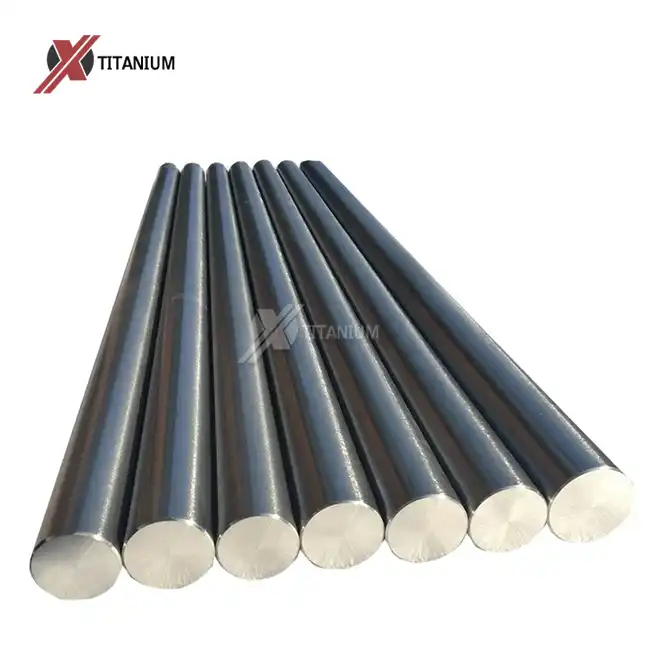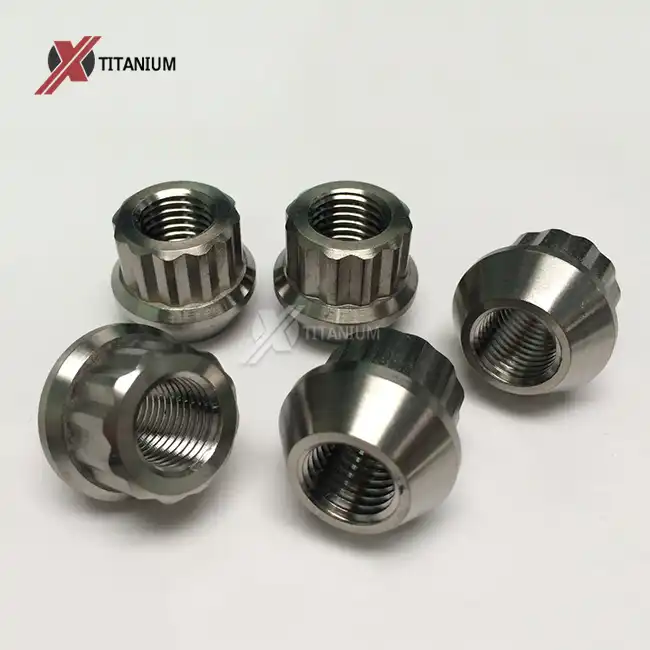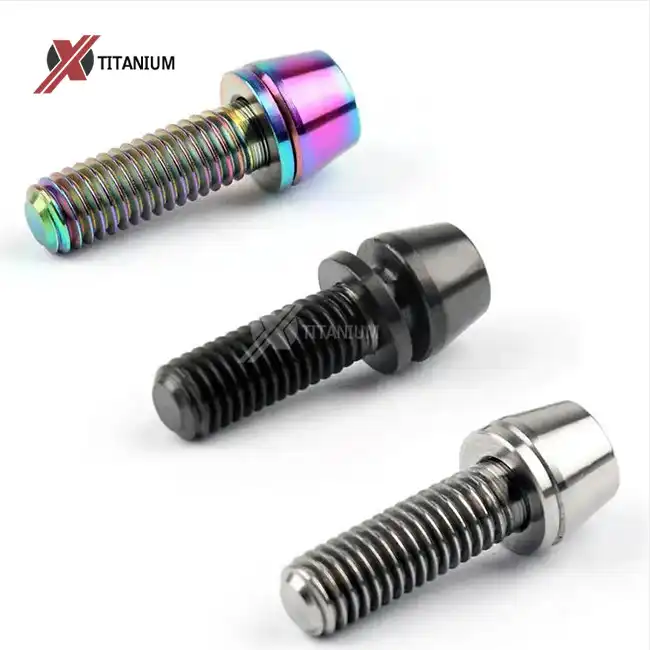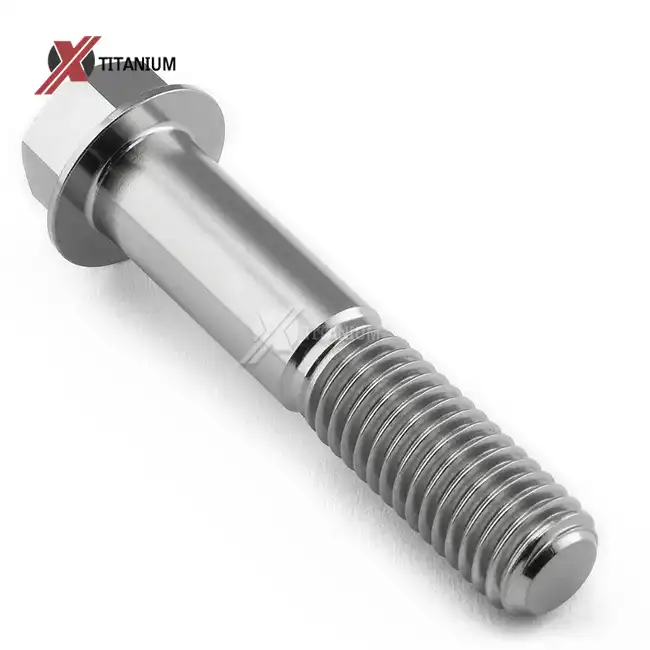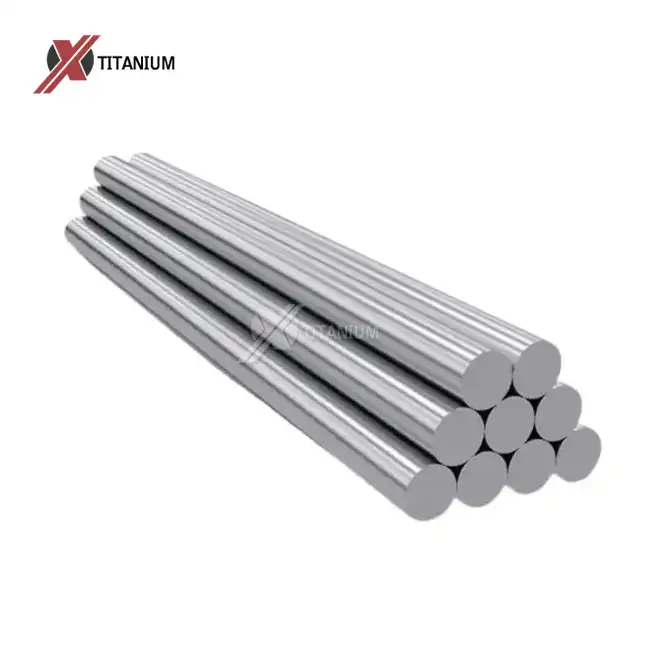Introducing Titanium and Titanium Alloys
Composition and Structure
Titanium, a lustrous transition metal, stands out for its remarkable strength-to-density ratio. Pure titanium, also known as commercially pure (CP) titanium, contains over 99% titanium. It exhibits a hexagonal close-packed (HCP) crystal structure at room temperature, contributing to its unique properties.
Titanium alloy rods, on the other hand, are engineered materials that combine titanium with other elements to enhance specific characteristics. Common alloying elements include aluminum, vanadium, molybdenum, and zirconium. These additions can alter the microstructure, leading to the formation of alpha (α), beta (β), or alpha+beta (α+β) phases, each imparting distinct properties to the alloy.
Mechanical Properties
The mechanical properties of titanium and its alloys are a key factor in their widespread use. Pure titanium boasts a tensile strength ranging from 240 to 680 MPa, depending on the grade. It offers good ductility and is relatively soft, making it easy to form and machine.
Titanium alloy rods, particularly those of the α+β type like Ti-6Al-4V (Grade 5), exhibit significantly higher strength. These alloys can achieve tensile strengths of 900-1100 MPa and yield strengths of 700-950 MPa. The addition of alloying elements also improves hardness, typically ranging from 35 to 40 HRC for Grade 5 titanium alloy rods.
Corrosion Resistance and Biocompatibility
Both pure titanium and titanium alloys are renowned for their exceptional corrosion resistance. This property stems from the formation of a stable, adherent oxide layer on the surface when exposed to oxygen. This passive film provides protection against various corrosive environments, including seawater and many chemicals.
In terms of biocompatibility, pure titanium has long been the gold standard for medical implants due to its inertness in the human body. However, certain titanium alloys, particularly those containing elements like niobium or tantalum, have shown comparable or even superior biocompatibility in some applications.
Applications and Performance of Titanium Alloy Rods
Aerospace and Aviation
The aerospace industry is one of the largest consumers of titanium alloy rods. These components are used extensively in aircraft engines, structural parts, and landing gear systems. The high strength-to-weight ratio of titanium alloys allows for significant weight reduction without compromising structural integrity. For instance, titanium alloy rods are crucial in the manufacture of compressor blades and discs in jet engines, where they must withstand high temperatures and stresses.
Medical and Biomedical Applications
In the medical field, titanium alloy rods have revolutionized orthopedic and dental implants. Their biocompatibility, coupled with superior mechanical properties, makes them ideal for load-bearing implants such as hip and knee replacements. The fatigue resistance of these alloys ensures long-term stability and reduces the risk of implant failure. Additionally, the low elastic modulus of certain titanium alloys, closer to that of human bone, helps minimize stress shielding effects.
Chemical and Marine Industries
Titanium alloy rods find extensive use in chemical processing equipment and marine applications due to their outstanding corrosion resistance. In chemical plants, these rods are used in pumps, valves, and heat exchangers that handle corrosive fluids. In marine environments, titanium alloy components resist saltwater corrosion, making them valuable in offshore oil rigs, desalination plants, and submarine systems.
Manufacturing and Processing of Titanium Alloy Rods
Production Techniques
The production of titanium alloy rods involves several sophisticated processes. The primary methods include cold rolling, hot rolling, annealing, and pickling. Cold rolling enhances the strength and hardness of the alloy but may reduce ductility. Hot rolling, performed at temperatures above the recrystallization point, allows for significant deformation with lower forces. Annealing is crucial for stress relief and microstructure optimization, while pickling removes surface oxides and impurities.
Surface Treatments
Surface finish plays a vital role in the performance of titanium alloy rods. Common surface treatments include polishing, pickling, acid cleaning, and sandblasting. Polishing produces a smooth, reflective surface ideal for aesthetic applications and reduced friction. Pickling and acid cleaning remove surface contaminants and enhance corrosion resistance. Sandblasting creates a textured surface, improving adhesion for coatings or increasing surface area for specific applications.
Quality Control and Testing
Rigorous quality control measures are essential in the production of titanium alloy rods. Standard tests include hardness testing to ensure consistent mechanical properties, bending tests to evaluate ductility and formability, and hydrostatic testing for pressure-bearing applications. Non-destructive testing methods such as ultrasonic inspection and X-ray analysis are also employed to detect internal defects or inconsistencies in the material structure.
Conclusion
Titanium alloy rods represent a significant advancement over pure titanium in many applications. Their superior strength, excellent corrosion resistance, and biocompatibility make them indispensable in industries ranging from aerospace to medicine. The ability to tailor properties through alloying and processing techniques allows for a wide range of performance characteristics, addressing diverse engineering challenges. While pure titanium remains valuable for certain applications, the versatility and enhanced properties of titanium alloy rods often make them the preferred choice in demanding environments where high performance is paramount.
At Baoji Chuanglian New Metal Material Co., Ltd., we specialize in manufacturing high-quality titanium alloy rods tailored to meet the exacting standards of various industries. Our expertise in titanium processing ensures that each product delivers optimal performance in its intended application. Whether you need titanium alloy rods for aerospace components, medical implants, or corrosion-resistant industrial equipment, we have the knowledge and capabilities to meet your requirements. For more information about our titanium alloy rod products and how they can benefit your projects, please contact us at info@cltifastener.com or djy6580@aliyun.com.
FAQ
What are the main differences between Grade 5 and Grade 9 titanium alloy rods?
Grade 5 (Ti-6Al-4V) is stronger and more widely used, while Grade 9 (Ti-3Al-2.5V) offers better cold formability.
Can titanium alloy rods be customized for specific applications?
Yes, we offer customization in diameter (5mm - 200mm), length, and surface finish to meet specific project needs.
How do titanium alloy rods perform in extreme temperatures?
They maintain excellent strength and stability across a wide temperature range, making them suitable for aerospace and industrial applications.
References
1. Lutjering, G., & Williams, J. C. (2007). Titanium (2nd ed.). Springer-Verlag Berlin Heidelberg.
2. Peters, M., Kumpfert, J., Ward, C. H., & Leyens, C. (2003). Titanium Alloys for Aerospace Applications. Advanced Engineering Materials, 5(6), 419-427.
3. Rack, H. J., & Qazi, J. I. (2006). Titanium alloys for biomedical applications. Materials Science and Engineering: C, 26(8), 1269-1277.
4. Boyer, R. R. (1996). An overview on the use of titanium in the aerospace industry. Materials Science and Engineering: A, 213(1-2), 103-114.
5. Donachie, M. J. (2000). Titanium: A Technical Guide (2nd ed.). ASM International.
